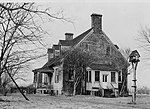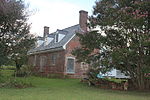Chippokes State Park
1967 establishments in VirginiaAgriculture museums in the United StatesFarm museums in VirginiaForestry museums in the United StatesHistoric districts on the National Register of Historic Places in Virginia ... and 11 more
Historic house museums in VirginiaHouses in Surry County, VirginiaHouses on the National Register of Historic Places in VirginiaMuseums in Surry County, VirginiaNRHP infobox with nocatNational Register of Historic Places in Surry County, VirginiaParks in Surry County, VirginiaPlantations in VirginiaProtected areas established in 1967State parks of VirginiaUse mdy dates from August 2023

Chippokes State Park (previously known as Chippokes Plantation State Park) is a Virginia state park on the south side of the James River on the Captain John Smith Chesapeake National Historic Trail. In addition to forests and fossil hunting on the beach, it includes three historic houses (plus outbuildings to each) as well as an open-air agricultural and forestry museum with seasonally appropriate events. Other recreational facilities include a visitor center, swimming pool, hiking trails, cabins, yurts and campgrounds). It is located at 695 Chippokes Park Road, in rural Surry County, Virginia off Route 10.
Excerpt from the Wikipedia article Chippokes State Park (License: CC BY-SA 3.0, Authors, Images).Chippokes State Park
Chippokes Farm Road,
Geographical coordinates (GPS) Address Nearby Places Show on map
Geographical coordinates (GPS)
| Latitude | Longitude |
|---|---|
| N 37.136666666667 ° | E -76.7275 ° |
Address
Chippokes Farm Road
Chippokes Farm Road
23883
Virginia, United States
Open on Google Maps









